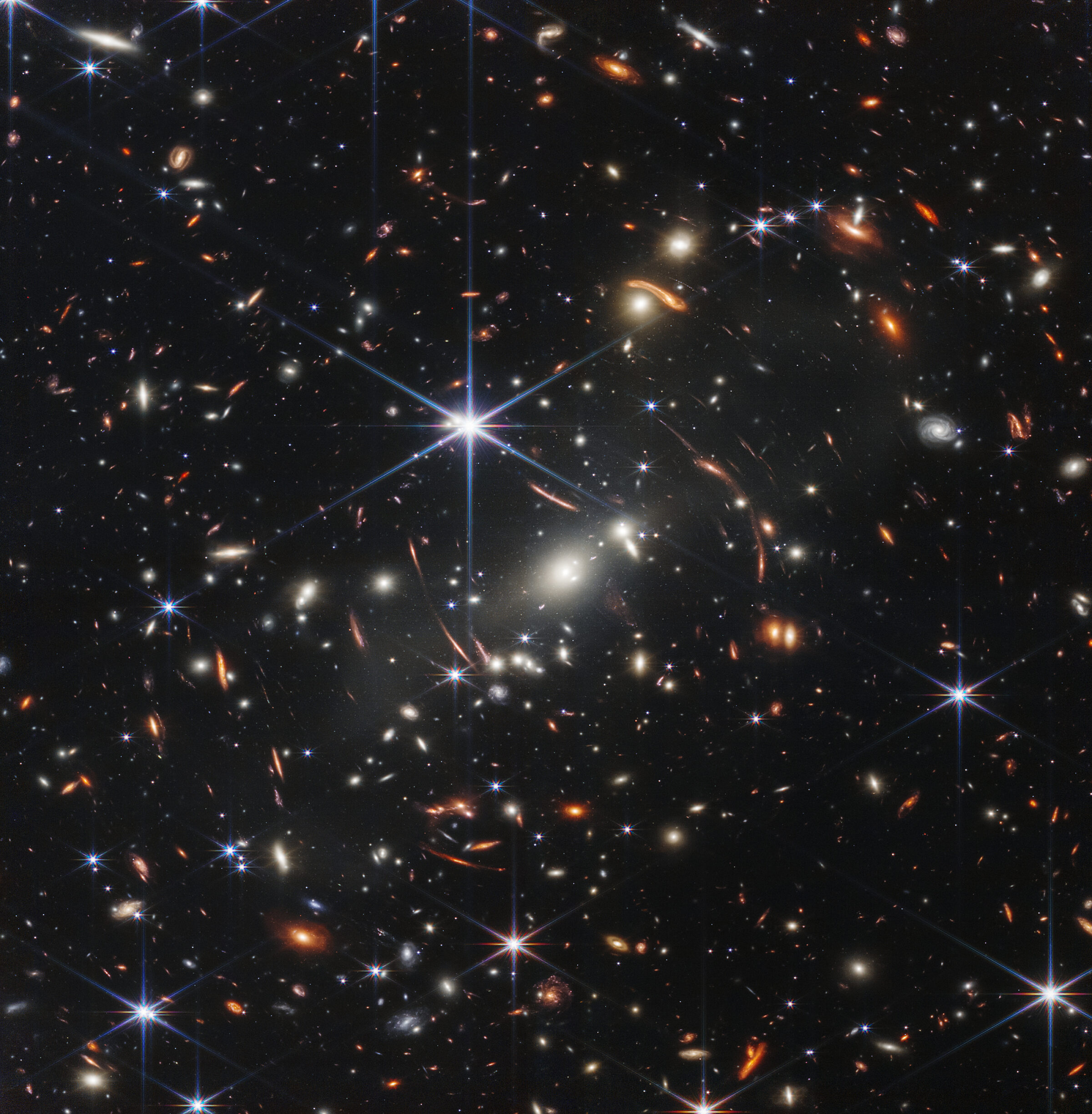Bill Nye • Jul 11, 2022
See JWST’s first deep field image
Today the world had an opportunity to peer deeper into the Universe than ever before when NASA released the first deep field image from the James Webb Space Telescope, or JWST, the most powerful space telescope ever built.

A “deep field” image is one that peers into the blackness of space in between visible stars to capture distant, dimmer stars and galaxies. JWST’s predecessor, the Hubble Space Telescope, sent us its own iconic deep field images from low Earth orbit.
The image we see today is from an instrument much farther from Earth, where space gets especially cold. These galaxies are fantastically distant, more than 13 billion light-years away, from the very farthest reaches of the Universe. As far as we know, the speed of light is constant and finite. What we’re seeing is ancient light, reaching us after billions of years of travel, a snapshot of what the early Universe looked like more than 13 billion years ago. You and I are alive to see it today. It’s mind-boggling.
To say that we’ve been waiting a lifetime for this image isn’t an overstatement; work on this mission started in 1996, back when some members of today’s JWST mission team were just little kids. Those scientists-and-engineers-to-be may have been inspired by the Hubble Space Telescope, which has been capturing jaw-dropping images of its own since the 1990s. There’s no doubt that countless of today’s young people will be inspired by JWST’s work to dedicate themselves to exploring this Universe we inhabit. This is something worth celebrating today and always.
Tomorrow, NASA will release even more images from JWST. We’ll also get some of the initial science gleaned from the telescope’s observations, including an analysis of the components of an exoplanetary atmosphere. We here at The Planetary Society are particularly excited about JWST’s ability to examine planets around other stars, which might unlock new insights into the possibilities of life beyond Earth. It could change the world.
You can join me and the rest of The Planetary Society community tomorrow as we watch NASA release the first batch of images from JWST. And you can count on us following this mission throughout its operations, sharing its discoveries with you as they happen.
People often ask: “Why do we build and fly instruments like JWST? What are we looking for out there?” We don’t know exactly; that’s why we’re doing it. There is no business case, as such. It’s us humans looking up and out to learn more about the Cosmos and our place within it.
It’s a special feeling, knowing that your understanding of the Cosmos may be about to change. With JWST just getting started, I can only imagine what we might learn. Thank you for following along with us as we embark on this journey together. The best is yet ahead out there.
The Time is Now.
As a Planetary Defender, you’re part of our mission to decrease the risk of Earth being hit by an asteroid or comet.
Donate Today

 Explore Worlds
Explore Worlds Find Life
Find Life Defend Earth
Defend Earth

